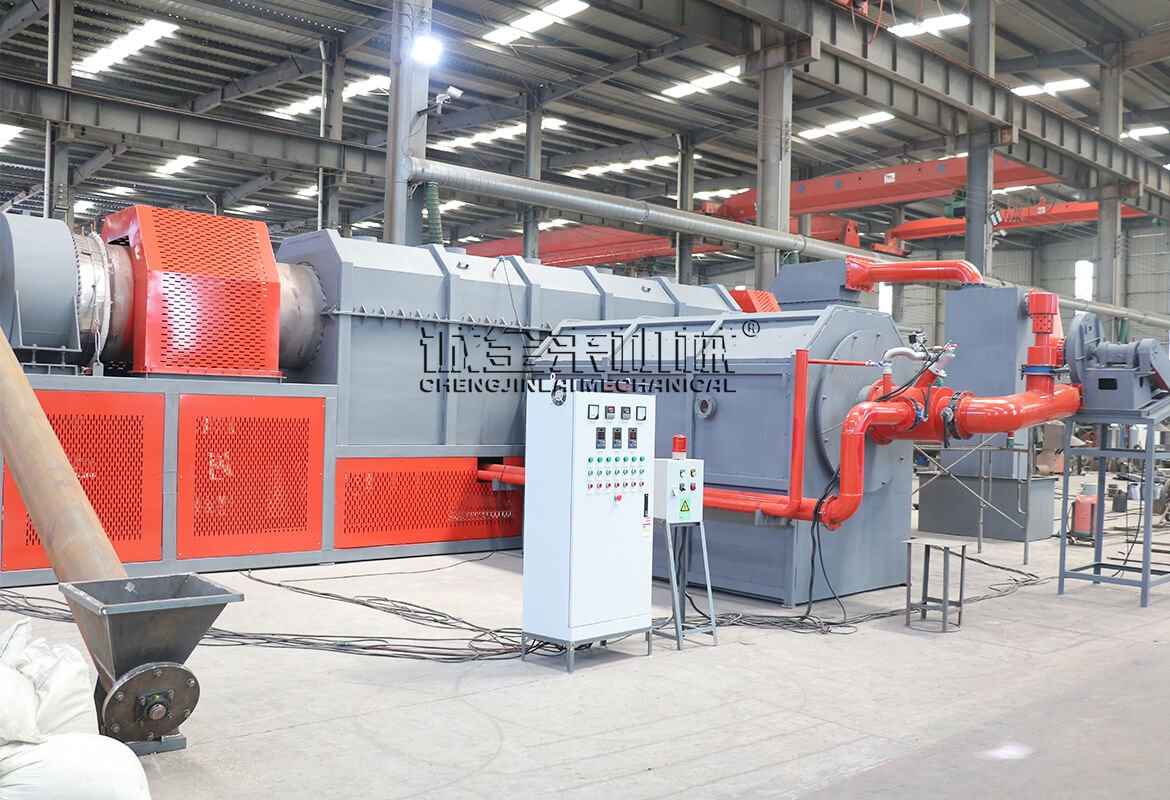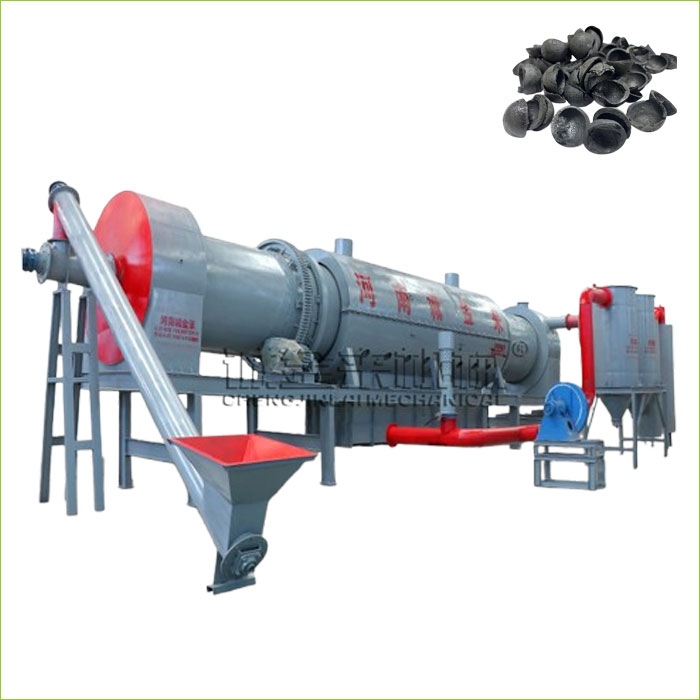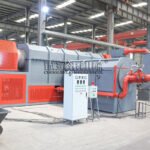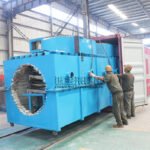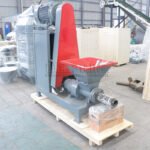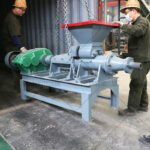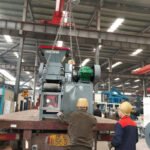Turning Rice Husk into Resource: A Live Look at Our Advanced Carbonization System
A New Benchmark in Sustainable Technology
In the controlled environment of our factory testing facility, a milestone in thermal processing technology is being achieved. Our engineers are putting the final touches on a fully integrated continuous carbonization system, complete with an advanced secondary combustion chamber, using abundant rice husk as its primary feedstock. This isn’t merely a machine; it’s a closed-loop ecosystem designed to transform agricultural waste into wealth, setting a new standard for efficiency and environmental responsibility in the biochar industry. The successful operation of this unit promises a significant leap forward for both large-scale industrial users and our planet.
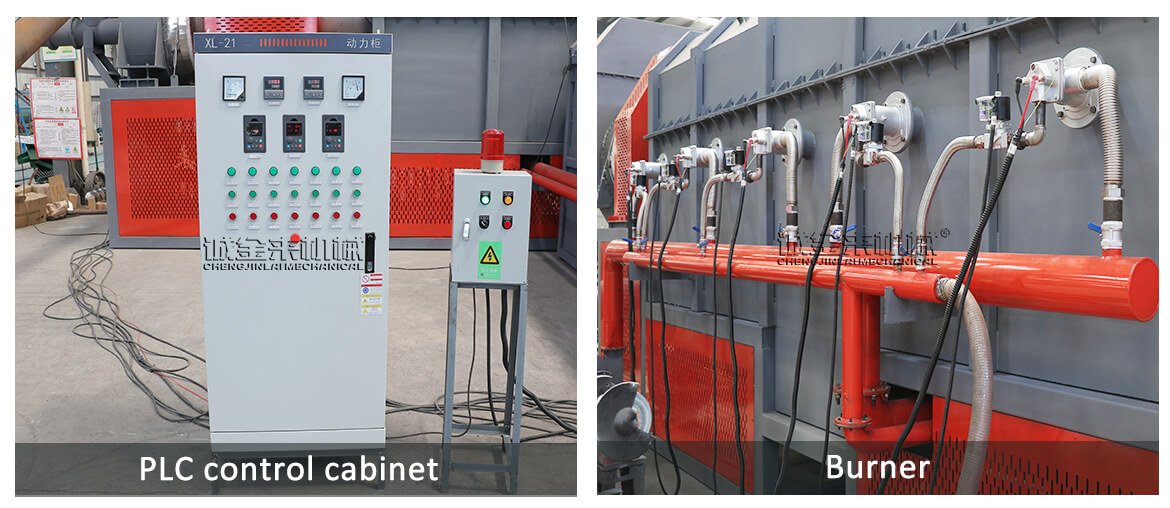
The Heart of the Process: Continuous Carbonization
At the core of this system lies the continuous carbonization furnace, a masterpiece of modern engineering that moves far beyond outdated batch-type kilns. This technology operates on a seamless, uninterrupted principle. Rice husk is automatically and steadily fed into the reactor, where it undergoes pyrolysis—a thermochemical decomposition in an oxygen-limited environment. The precision-controlled temperature and residence time within the furnace ensure the consistent production of high-quality biochar. This continuous method eliminates the energy losses associated with heating and cooling batch reactors, resulting in superior energy efficiency, a stable and uniform product quality, and a dramatically higher throughput that makes large-scale commercial ventures not only feasible but highly profitable.
Ensuring Complete Combustion: The Role of the Secondary Chamber
The true environmental prowess of this system is unlocked in the secondary combustion chamber, or afterburner. The pyrolysis process naturally generates combustible syngas and volatile organic compounds. In lesser systems, these byproducts could represent an emissions problem or a wasted energy opportunity. Our secondary chamber is specifically designed to harness this potential. These gases are forcibly routed into this high-temperature chamber, where they are mixed with precisely metered oxygen and re-ignited. This process guarantees their complete combustion, effectively destroying pollutants and hazardous compounds. The result is a clean exhaust and the generation of immense thermal energy, which is pivotal for the system’s self-sustaining operation.
The Perfect Feedstock: Valorizing Rice Husk
The choice of rice husk is both strategic and impactful. As a prolific byproduct of global rice milling, billions of tons of this silica-rich material are generated annually, often presenting a significant disposal challenge that leads to open burning or landfill. Our live testing demonstrates how this system is uniquely suited to valorize this problematic waste stream. The furnace efficiently processes the low-density husk, converting its organic components into valuable biochar and its gaseous emissions into clean energy. This provides an elegant and economic solution to a persistent agricultural waste issue, turning a disposal cost into a profitable resource and fostering a circular economy within farming communities.

Live from the Test Floor: Performance and Data
On the factory floor, the system’s performance is being meticulously quantified under rigorous conditions. Our engineering team is continuously monitoring a suite of critical parameters: temperature profiles across both chambers, syngas composition, biochar production rates, and the overall energy balance. The initial data is exceptionally promising, indicating stable and autonomous operation, high biochar yield, and emissions that are not only compliant but significantly superior to the most stringent international environmental standards. The tangible outputs—a consistent flow of fine, carbon-rich biochar and a clear, odorless exhaust plume—visibly confirm the design’s effectiveness and operational excellence.
Beyond the Machine: Environmental and Economic Impact
The implications of this technology extend far beyond the factory walls. By cleanly converting rice husk into stable biochar, this system actively contributes to several global challenges. It offers a legitimate alternative to open burning, drastically reducing airborne particulate matter and greenhouse gas emissions. The produced biochar serves as a powerful soil amendment, enhancing fertility and water retention in agricultural fields while sequestering carbon for centuries. Furthermore, the process generates recoverable heat energy that can be used for electricity generation or other industrial processes. This creates a powerful trifecta of benefits: waste reduction, renewable energy production, and a valuable end-product, making it a compelling investment for a sustainable future.
A Commitment to a Greener Future
The successful factory testing of this continuous carbonization system with its integrated secondary combustion chamber marks a pivotal achievement in our mission to deliver innovative and responsible technological solutions. We are energized by the potential this technology holds for transforming waste management and renewable resource creation across the globe. As we move toward full-scale deployment, we envision this system becoming a cornerstone for industries and communities dedicated to reducing their environmental footprint while embracing economic sustainability, truly turning waste into a catalyst for growth.




